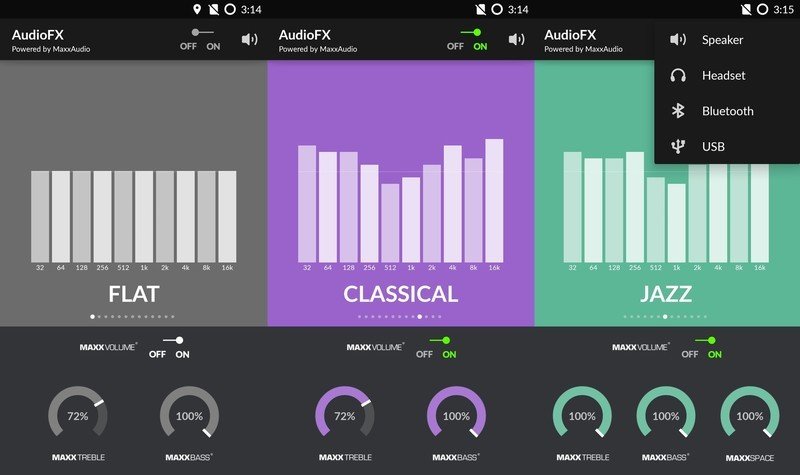Using Cyanogen OS AudioFX, and whether you should bother

Generally speaking, audio enhancement apps and services for Android phones and tablets have a complicated relationship with their users. Someone with a reasonable understanding of how audio works can use an audio enhancement service to great effect, but these services need to cater to everyone else as well. The end result typically is a series of presets that are almost good and a series of toggles so you can turn the feature on and off depending on what you're listening to, but if you get one on your device that works well it can be a big deal.
Cyanogen OS includes one of these services in the form of a partnership with MaxxAudio, called AudioFX. Here's what you need to know in order to effectively navigate the app, should you decide your audio could use a little tweaking.

AudioFX is by far the nicest-looking implementation of MaxxAudio out there, and easily one of the friendliest apps for audio enhancement available today. The app has a clean, straightforward UI to it with plenty of dark tones and bright colors. Front and center are the audio presets, taking you through Folk and Jazz and Small Speakers, with adjustments across the colorful bars as you swipe around. Beneath this you find MaxxTrebble and MaxxBass knobs, which don't really require any further explanation. At the top of the app you find an on/off toggle, and tapping it will adjust the sound coming out of your speakers or headphones accordingly. If you're using headphones, you gain an extra MaxxSpace knob for depth.
With a decent set of cans, AudioFX can make a tremendous difference
Not every app allows AudioFX to alter the sound coming out of the phone, so there's a bit of trial and error at the beginning of your experience. You'll have great success with locally stored audio, but there's some variance with the streaming apps. Spotify works well, but iHeartRadio doesn't recognize the service at all. AudioFX is completely unaware when something works or doesn't work, and has no idea what kind of music you're listening to, so frequent trips back and forth between apps to disable the service or change the way the app is altering sound is required in most cases.
If you're planning on listening to music through the speakers included on your phone, no matter which Cyanogen OS device you're using, the difference in audio quality is minimal. Headphones, on the other hand, will offer a much better experience. With a decent set of cans on your head AudioFX can make a tremendous difference in the quality of audio coming from your phone, but even with inexpensive earbuds it's not hard to appreciate the adjustments being made within the presets.
AudioFX is something every audiophile wishes would come pre-loaded on everything, but ultimately lacks the universal functionality and ease of use to be something you're going to feel compelled to use all the time. It's nice if you've got a playlist of similar music to burn through, but in most other situations its existence adds an unfortunate number of additional steps to regularly get the sound you want.
Get the latest news from Android Central, your trusted companion in the world of Android

